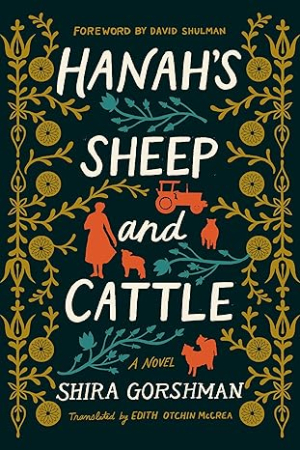Hanah's Sheep and Cattle
Shira Gorshman’s piquant historical novel Hannah’s Sheep and Cattle nestles an abiding love story amid the interwar upheavals of Soviet Russia.
In 1930, on a Jewish commune on the wide Crimean steppe, Hanah is twenty-three, the mother of three, and the beautiful, formidable commander of the livestock brigade. Life is “all but a little song” for this industrious woman, who measures her days according to milking and other chores. Then Nehemyah, an artist from Moscow, arrives; the two are smitten. Meeting under the stars, they form an incomparable bond based on mutual respect. Hanah marvels:
I have no idea what’s happening to me, what kind of magic there is hidden inside you. I was hard as a stone; you’ve made me softer than a raspberry.
Though Hanah knows that love doesn’t mean obeying and “never will,” she and her daughters move with Nehemyah in Moscow. Their one room is often abuzz with the company of Nehemyah’s fellow artists. Amid the bustle, Hanah finds herself missing nature, thinking of her childhood home and of the commune, waiting far away in the “diffuse greenish starshine.” Her own artistic aspirations begin to bloom, nourished by warm memories and wild dreams.
Reflecting practical nostalgia, the prose is marked by pastoral lyricism and echoes of Yiddish wryness. It is also undergirded by Hanah’s terrible awareness of the political dangers that surround her family. Fellow artists are disappeared; Hanah, who feels everything, juxtaposes the sight of a bathing woman who “radiates holiness” with awareness that elsewhere, Jewish women are being “driven, naked and blind, to their deaths.” Ever defiant, she nonetheless finds room to absorb beauty. During the war and in times of peace, she marvels that “everything is inevitable,” from the light on the Volga to her evolving, enduring marriage.
Hannah’s Sheep and Cattle is a sharp autobiographical novel that infuses an interwar love story with vivacity.
Reviewed by
Michelle Anne Schingler
Disclosure: This article is not an endorsement, but a review. The publisher of this book provided free copies of the book to have their book reviewed by a professional reviewer. No fee was paid by the publisher for this review. Foreword Reviews only recommends books that we love. Foreword Magazine, Inc. is disclosing this in accordance with the Federal Trade Commission’s 16 CFR, Part 255.

